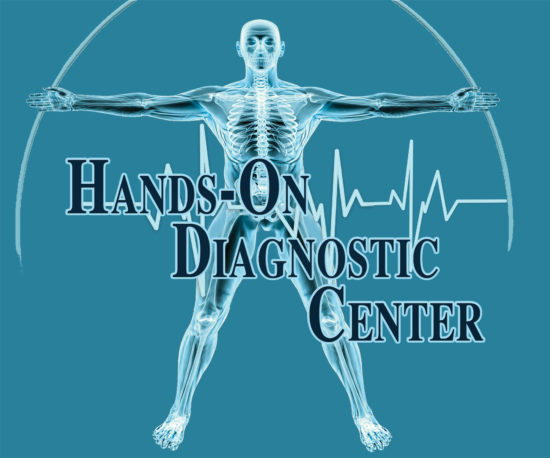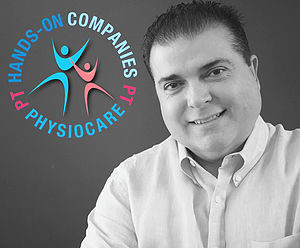
—
Listen to the podcast here:
7 Facts That Are Changing The Future Of PT with Dr. Dimitrios Kostopoulos
I have a repeat guest, Dr. Dimitrios Kostopoulos or Dimi as we like to call him. He wants to talk about the seven facts that are changing the future of physical therapy. Dimi is a successful business owner. He has a continuing education company, Hands-On Seminars, a diagnostics company and has been on a number of boards of physical therapy in the past. I’m always interested in the insight, future thinking and vision that Dimi has regarding the profession. We’ll be covering a number of different topics. As you read the different facts that Dimi lets out, I want you to consider how you might need to change in the future. I don’t believe that the way we’re currently practicing outpatient physical therapy is sustainable with the changes that are coming. I want you to consider what you might need to do in your practice, to make simple changes in order to navigate what’s happening in the industry and in healthcare in general and where we are going to position ourselves as physical therapists in that landscape. Read the facts, consider where your standing is as a physical therapy owner and what you might need to do to change. Dimi has a lot of insights. Change is coming. We need to consider what we’re going to do in the face of that change.
—
I’m excited to bring back Dr. Dimitrios Kostopoulos from New York, Cofounder and CEO of Hands-On Diagnostic Centers and Services. Thank you again for coming back, Dimi.
Nathan, thank you for the invite. It’s awesome to be here.
You reached out to me because you’ve had some revelations about the future of physical therapy and what’s happening. I was excited to bring you on because I’m always excited about your insight. What got you to come upon these seven factors that are changing the future physical therapy?
If we consider that we are very close to the year 2020 and if we consider how physical therapy will be beyond 2020, I strongly believe that it will be very different than what it is now. It will be very different because of necessity. There are signs that show us that it will be very different. Development on the professional front as well as socioeconomic, marketplace conditions and developments dictate that we are going to have very significant changes in the physical therapy front in the years to come. It will be crucial for physical therapists, especially those in private practice who want to survive, to understand the depth and breadth of those changes and how they can survive in a new climate of physical therapy. I should say not survive, but thrive in a new climate and the future clients of physical therapy.
It’s not necessarily about survival because physical therapy will always be there. Whether or not your clinic survives a lot of these changes is up to how well they adapt and take on some of the regulations that are coming our way, implement those and handle some of the hospital networks that are invading some of their space. What are some of the signs that you see coming forward?
The idea is that physical therapists, especially those in private practice, understand and perceive the polls of the professional landscape and act accordingly. It’s managing to position themselves and their companies ahead of their competition and being able to dominate the future marketplace. Many people who are dominating many practices, who are dominating the physical therapy marketplace may not be able to continue dominating that marketplace unless they evolve. The big question is, will you as a physical therapist in private practice be one of them? One of the people who will not just survive but also thrive in the future environment. You asked me about these changes. What are these facts that are changing the future of physical therapy? There are seven facts. I’m going to go over each one of them.
Many practices who are dominating the PT marketplace may not be able to continue dominating that marketplace unless they evolve. Click To TweetInsurance Payment for PT Services Will Decrease
Fact one is that insurance payment for physical therapy services, especially private practice physical therapy, is projected to decrease for the next several years until at least the year 2022. We have a variety of indicators to support this fact. The Physical Therapy Business Alliance did their own research. They made the projection that reimbursements for PT services are going to decrease year after year until the year 2022. In 2015, there was a study that was published in the journal of the American Physical Therapy Association. The title of this study was Utilization and Payments of Office-Based Physical Therapy and Rehabilitation Services Among Individuals with Commercial Insurance. This study identified that although most physical therapy services are being provided by physical therapists, physical therapists receive the least reimbursement for the physical therapy services they provide compared to other healthcare providers such as physicians, chiropractors and others who also provide physical therapy services.
The Centers for Medicare Services announced their merit-based incentive program. This program promises to have very significant implications in the Medicare reimbursement for physical therapy, especially for those people who private practice. Remember that based on that program, if the services are being provided by a physical therapy assistant, there will be a 15% reduction of the allowable Medicare fee because the service was provided by your PTA instead of a PT. The American Physical Therapy Association opposed to that but the truth of the matter is that is the fact. This is something that is happening. The merit-based system is a complicated system that essentially will divide the therapists into low-performing and high-performing therapists. If there is a high performer, there is a low performer. You can’t have all high performance unless you compare them with an absolute value. If you compare them amongst themselves, if you have a high performer, you’re going to have a low performer.
Unfortunately, we all think that we’re providing the best physical therapy out there but this is going to separate the two, the high performers from the low performers. Hopefully, they’re a little bit more objective about it.
Those who will be considered low performers, they’re going to shift some part of their reimbursement into those considered high performer therapists. It remains to be seen but here are the indicators putting forward the fact that we’re going to have reductions in reimbursement. I’m making a general statement, reductions in physical therapy reimbursement. I’m not talking about Medicare only. The reimbursement you are receiving from any insurance carrier of what is considered reasonable and customary reimbursement is being determined by two factors: the Medicare reimbursement in your region and the workers’ compensation reimbursement in your region. If you think for a moment of what is your average Medicare reimbursement rate in your region and what is your worker’s compensation average reimbursement, all of the other insurance carriers are reimbursing somewhere around these two numbers. If Medicare reimbursement ends up going down, then that is going to cause other insurances to follow suit and reduce their reimbursement for physical therapy too.
They’re going to follow whatever Medicare does and if those reimbursements decrease, they’ll find an excuse to decrease as well. They’ll use the same formulas and whatnot. It’s a race to the bottom almost. How do we get to the lowest common denominator here? If there are incentive-based programs that are going to become a part of Medicare, you can imagine those same programs are going to become part of commercial insurances as well.

PT Practice Owners Will Settle For 12% Profit Margins
I’m going to dive into fact two, which is very much related to fact one. The fact two is that more and more physical therapy private practice owners ended up settling for profit margins of 12% or less. They end up working the highest number of hours ever since they started recording these statistics. You are a member of the P2P network of the Private Practice Section. The P2P network of PPS APTA did a benchmark study that looked at the profit margins for private practice physical therapists around the country. Their ranges on profitability are from 7% to 16% and that averages somewhere around 11%, 12%. The profit margin for physical therapy across the nation is about 11% to 12%. Stop for a moment and think of this. If we end up having a reduction of services, let’s say reimbursement across the board or somewhere around 10%, then what happens with a profit margin of PTs? It’s going to decline to zero.
Another organization called Sageworks, they did an earlier study and identified that across the board profit margin for PT in private practice is 10% and in a declining fashion. They defined why they are in a declining fashion. There is a very interesting thing to consider. Besides inflation that increases while your reimbursement remains the same or decreases puts a dent in your profitability, the other thing that happens is that salaries to staff physical therapists are in an increasing trend. It’s because the demand for physical therapists is very high. The supply of physical therapists from university graduates are not able to meet the demand and regulations have become tighter. Therefore, foreign trained physical therapists that were coming into the country from places like India, Philippines, Australia and South Africa have decreased substantially because of the tighter regulations in immigration. We do have a greater shortage of physical therapists to be hired. That causes an increasing trend in the salaries that a private practitioner has to pay in order to be able to hire and retain quality staff.
The graduates coming out of school are expecting higher salaries. I don’t fault them simply because a lot of them are coming out of schools with $100,000 in student loans or even more. They need higher salaries to sustain the student loans that they’ve taken on. The demand is always going to be there for physical therapy. I know it’s hard to find physical therapists that will join your team.
Expansion Of The PT Practice Scope
Nathan, I’ve been giving you the negative stuff. It’s not all about gloom and doom. Physical therapists are very innovative people and they are looking for solutions. Not only solutions of variability but solutions to do well financially from their profession. Fact three, physical therapists from around the world call for the expansion of the scope of physical therapy practice. There was a breakthrough article published in the October issue 2018 of the Physical Therapy Journal. The title of the article is Reflections and Future Directions on Extending Physical Therapist Scope of Practice to Improve Quality of Care and Preserve Health Care Resources. This an international collaboration, 3PPS from the US and several others from UK, Australia and South Africa. In that article, these professionals are citing the various areas of expansion of the scope of physical therapy practice in other countries outside the US. For example, physical therapists in other countries not only are they able to order X-rays, MRIs, ultrasound scans, electrophysiological testing but also order blood tests. They are able to perform joint and soft tissue injections. They are able to prescribe medications. This comes in total alignment with my core belief that physical therapists have to become the primary care providers for any musculoskeletal problems that patients get. For them to have an expansive role in participating in the proper diagnosis of the patient’s problem and also managing the patients, not just treating but managing the patients properly.
Those therapists who will embrace the change, who will work through the change, will be able to survive and thrive. Click To TweetWe have the foundations to do that. Increasing our scope for musculoskeletal care is necessary and we’re the best providers to do so.
Full Recognition For Electrophysiology Study Payments Performed By PTs
Our associations are creating a significant impact. I’m going to give you fact number four. The Centers for Medicare Services, CMS, with the strong involvement of the American Physical Therapy Association and the Academy of Clinical Electrophysiology and Wound Management, fully recognized the full payment of electrophysiology studies performed by physical therapists. In an unprecedented move, the federal government issued a directive to all Medicare intermediaries directing them to immediately pay a physical therapist for the global service. Meaning both the professional component and the technical component of properly-certified physical therapists for electromyography testing, nerve conduction testing and evoked potential studies. This was a huge win for the profession, especially since the CMS language was very clear and direct about this.
A huge win for expanding our scope of care and being recognized for it.
PTs Recognized To Perform Musculoskeletal Ultrasound Studies
If you remember the American Institute of Ultrasound Medicine, AIUM recognized physical therapists as the approved providers to perform musculoskeletal ultrasound studies. The PTs were recognized at the same level as medical doctors in providing and getting reimbursed for a musculoskeletal ultrasound, which is huge. AIUM is the organization that many insurance carriers utilized to decide which provider they are going to pay for the musculoskeletal ultrasound.
That’s another huge breakthrough for expanding our scope. The musculoskeletal ultrasound can be so easily implemented into the everyday outpatient experience that most physical therapy owners provide. It’s such an easy implementation to add to our services, to provide better care. We can see what’s going on instead of using our best guesses based on special tests and see what’s physiologically happening inside the joint.
Diagnostic Testing Results To Change In Patient Management
I’m going to speak fact number six. This is the result of a study that Hands-On Diagnostics performed. It was a multicenter study. It included 465 patients. The study looked at the effectiveness and the implications in patient management and patient satisfaction. When appropriate patients receive the diagnostic testing, it would be the physical therapy environment by the physical therapist such as electromyography testing and musculoskeletal ultrasound. The results of the study were astonishing. 62% of the patients who received EMG and musculoskeletal ultrasound testing by their physical therapist had a change in their management which was caused by the results of the diagnostic studies. A patient who went to a physical therapy practice, the physical therapist performed a physical examination, wrote a treatment plan, but then decided to do either an EMG or an ultrasound study because something was not going right with the treatment. The patient filled out an assessment form and revealed that the patient could be a candidate for these diagnostic tests. The therapist performs these diagnostic tests and in 62% of the time, that original treatment plan had to be altered because of the results of the studies. That’s pretty amazing.

Going into a study like that you’d think, “Maybe some diagnostic testing would change 25%, 33% of the plans of care that were laid out by these experienced.” These aren’t brand new physical therapists but experienced physical therapists that are doing all the “appropriate test” measures and whatnot. To say that 62%, almost two-thirds of the plans of care were changing based on diagnostic tests says a lot.
What is ironic about this is there’s a different study that was done by a group of urologists was published at Muscle & Nerve Journal. It was entitled, The Usefulness of Electrodiagnostic Studies in the Diagnosis and Management of Neuromuscular Disorders. This study found that electrodiagnostic studies lead to a change in diagnosis in more than half the patients and lead to a change in management plan in more than 60% of the patients. It’s interesting that when that study was done in a medical environment, they realize that electrodiagnostic studies end up causing in 60% of the cases a change in patient management. When we did a similar study in a physical therapy environment, we found that 62% of the cases, the patient management changed. It’s very comparable.
It’s almost the exact same results. It goes to show that we could benefit from some diagnostics to assist us.
Another thing is how patients understand their problem when they see a physical therapist. You’re going to get greater compliance when a patient understands their problem and then becomes willing to participate in the solution. In our study, we found that 90% of the patients strongly agreed that they were better able to understand their problem. Able to manage their problem because of the answers they got through the diagnostic testing performed in the physical therapy clinic.
Think out of the box. What you learned at the university when you graduated was amazing but not necessarily enough for the future. Click To TweetDiagnostic testing makes everything more objective. When you get an ultrasound, “Here’s the picture of the bone spur in your shoulder. Here is where the tear is in your rotator cuff or with the electrodiagnostics. Here is your level of nerve damage is that L-four on the left side. These are the findings that show that.” There’s no guessing anymore. Having some diagnostics on our side makes not only our plans of care improved, our treatment efficacy improved, but also improves our standing with patients and with the medical community that we’re doing and treating the right things.
PTS Will Study, Change, Evolve, Get Involved And Change Their Operation
We put all these things together that I discussed thus far. The decrease of insurance reimbursement for physical therapists in private practice, the very low 10% to 12% profit margins for physical therapist in private practice. The fact that physical therapists around the globe are talking about expanding the role of physical therapy in including a lot of these diagnostics. The fact that our associations are creating conditions. Circumstances with the involvement of the federal government for the recognition of physical therapists. Performing both musculoskeletal ultrasound as well as electrodiagnostic studies. That creates an environment to have a different type of physical therapists tomorrow. You’re going to have physical therapists who will embrace these changes, who will study, change, evolve, get involved, and change their whole operation in their practices.
Incorporating diagnostics and you’re going have some physical therapist school will deny the change. In my opinion, those therapists who will embrace the change that will work through the change, they’ll be able to survive and thrive, the same way that many physical therapists have done across the country. I’m going to plug Hands-On Diagnostics, it’s imperative because it’s data. We have data that physical therapists who are performing diagnostics are able to retrieve reimbursements from insurance five to ten times greater than the single physical therapy visit. That can create a huge impact on somebody’s facility. Not only offering an amazing service for their patients but also getting paid well for that service.
To speak to what you’re talking about in regards to the future of physical therapist, you bring a realization that physical therapy as it is constituted might not exist in the next ten years. There will have to be some evolution to what we’re doing and what we’re providing. It isn’t to say that our practices will go away. That’s not the case whatsoever. We need to expand our scope. We need to be doing more to create a bigger footprint in the medical community. We do that by including diagnostics into the services and becoming the gatekeeper like we want to be. That cannot only improve physical therapy that can improve the healthcare system in general. We know that if we are the beginning point for any musculoskeletal condition, then the cost of that episode of care is going to decrease substantially.
The thing is we have developed the systems and technologies to help somebody implement this in their practice very easily. When you came into HODS, it was still in its infancy stages. Many changes have taken place and HODS has become the only organization worldwide to offer both a residency in clinical electrophysiology and a fellowship in musculoskeletal ultrasound sonography. Helping therapists to achieve board certifications at the record time.

These changes are huge. There will be a huge impact. What would you say to a young physical therapist who’s starting? Maybe being into his clinic as an owner for less than a year, what would you say to someone new regarding some of these things that we’ve talked about?
Think out of the box. What you learned at the university when you graduated was amazing, awesome, fantastic but not necessarily enough for the physical therapy of the future. Physical therapy beyond 2020 is different than physical therapy before 2020. I would say look around, think of what the changes to come are. There are other changes that I did not mention. The areas of telemedicine, for example, are very important areas that will evolve both as clinical models as well as educational models. You have to look around at various areas and really jump ahead of the competition. When you have the marketplace, you have competitors. In the physical therapy area, there are competitors. The way to get ahead of the competition is to identify specific niches that the people need, want, buy and offer them massively. You can become the leader in what you are offering in your area.
Set yourself apart by looking ahead. Someone who has a new practice like that can be nimbler. They can pivot and move into other niches, specific types of care in other parts of the industry that maybe a practice with four or five physical therapists can’t do. Thanks for your time, Dimi. I’m excited to see what the future holds. I know you’ll be at the forefront of it with all of your hard work.
Thank you for the invite, Nathan. Anytime, you and your audience can reach upon me.
How can they reach you?
It’s very easy, I’ll even give my cell phone. I keep open communication lines with everybody. Anybody can reach me at 917-538-2242 or go to www.DiagnosticsForPT.com. If you get to go to DiagnosticsForPT.com, enroll to receive for free the Diagnostics for PT Magazine, which is a quarterly magazine that can be mailed out to you free of charge, if you would like to find out about the latest things in the physical therapy industry.
It’s got a lot of great information in there as well. Thanks again, Dimi. I invite anyone who is interested in looking forward to what the future might hold for physical therapy. Reach out to Dimi and give him a call.
Nathan, thank you for what you’re doing for the profession.
Thank you, Dimi.
Important Links:
- www.DiagnosticsForPT.com
- Dr. Dimitrios Kostopoulos
- Hands-On Seminars
- Hands-On Diagnostic Centers and Services
- Utilization and Payments of Office-Based Physical Therapy and Rehabilitation Services Among Individuals with Commercial Insurance
- Reflections and Future Directions on Extending Physical Therapist Scope of Practice to Improve Quality of Care and Preserve Health Care Resources
- The Usefulness of Electrodiagnostic Studies in the Diagnosis and Management of Neuromuscular Disorders
About Dr. Dimitrios Kostopoulos
 Dr. Kostopoulos is a Board Certified Clinical Electrophysiology Specialist with over 29 years of clinical experience and over 20 years experience in electrophysiology testing. He is one of very few Electrophysiology Specialists who have achieved a Doctorate of Science (DSc) in Clinical Electrophysiology Testing.
Dr. Kostopoulos is a Board Certified Clinical Electrophysiology Specialist with over 29 years of clinical experience and over 20 years experience in electrophysiology testing. He is one of very few Electrophysiology Specialists who have achieved a Doctorate of Science (DSc) in Clinical Electrophysiology Testing.
He is a Clinical Affiliate Assistant Professor. at Charles E. Schmidt College of Medicine at Florida Atlantic University, past member of SACE (Specialization Academy of Content Experts) for the electrophysiology board exam of ABPTS and serves as an elected member of the Nominating Committee of the Academy of Clinical Electrophysiology (ACEWM) of the APTA. He is also an Adjunct Faculty of Springfield College teaching the Clinical Electrophysiology module.
A world renowned, leading expert and best-selling author in Myofascial Pain and co-founder of the Hands-On Companies (Est. 1992 in New York). Dr. Kostopoulos has extensive training and teaching experience in different areas of manual therapy with an emphasis in Trigger Point, MyoFascial, NeuroFascial Therapy and Manipulation.
He earned his Doctorate (PhD) and Master’s degrees at New York University and his second Doctorate of Science (DSc) degree at Rocky Mountain University (Clinical Electrophysiology). Dr. Kostopoulos has obtained his MD degree as a medical graduate from UHSA School of Medicine.
He has numerous publications; he is an Associate Editor for the Journal of Bodywork and Movement Therapies published by Elsevier and has taught thousands of students worldwide through Hands-On Seminars.
